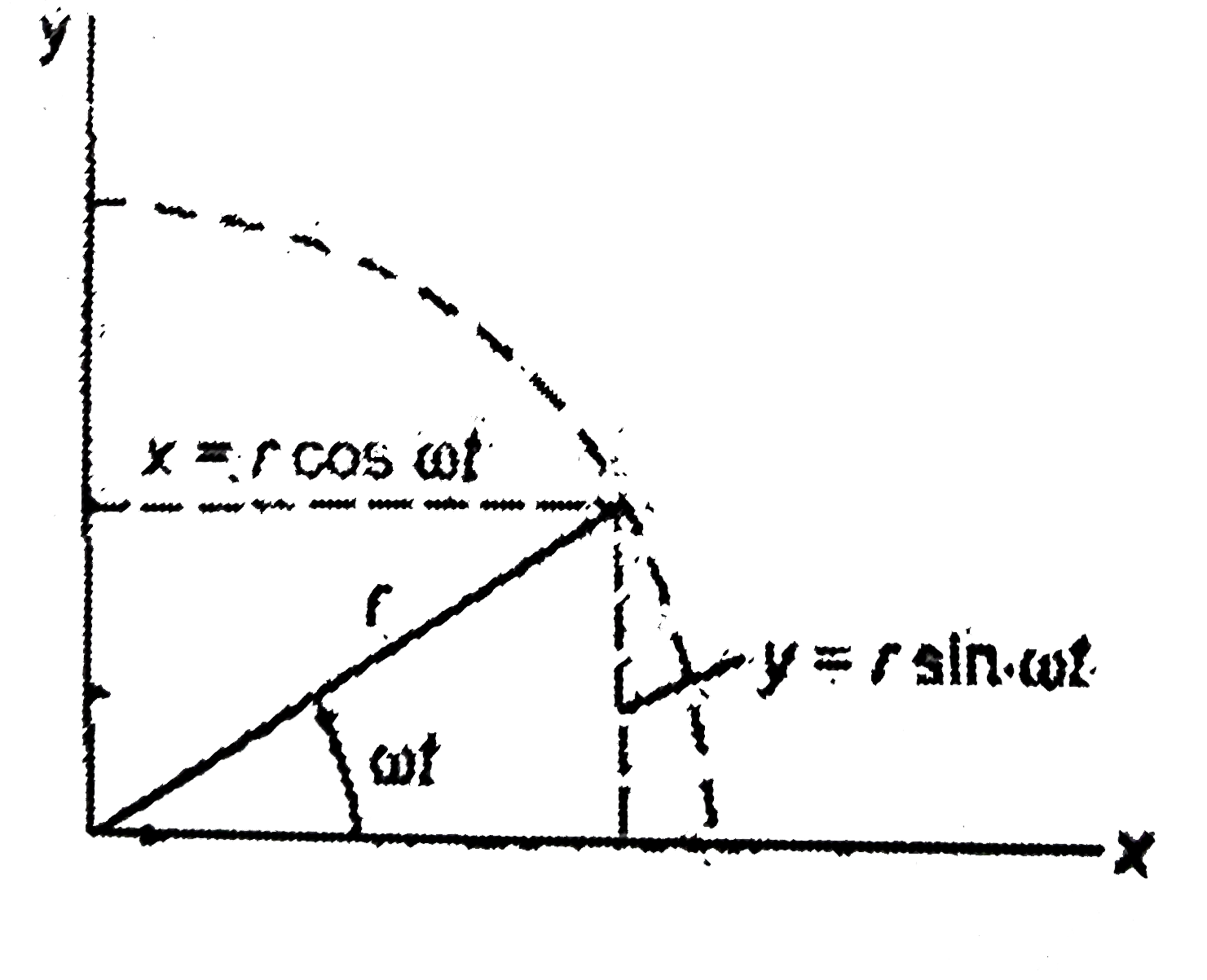The position vector of a particle at time t is given by →r=2tˆi+5tˆj+4sinωtˆk where ω is a constant.Answer the following questions
Velocity vector of the particle is
Constant in magnitude but variable with direction
constant in direction must variable with magnitude
constant
Varying with magnitude as well as direction
The correct Answer is:D
→r=2tˆi+5tˆj+4ωsinωtˆk
⇒→V=2ˆi+5ˆj+4sinωtˆk⇒→a=−4ω2sinωtˆk
We can earily acc/ is varify with magnitude but along a constant direction. As velocity is not changing along x axis and y axis, we can early realise a vector parallel to XY plane which is ⊥r to velocity. say x.ˆi+yˆj=→A Hence →V.→A=0(for →V⊥→A)
The above equation gives are solution
x=5andy=−2orx=10andy=−4 and so on (Realise the above solution in 3D and you will get a clear idea).
Topper's Solved these Questions
- BOOK - NARAYNACHAPTER - MOTION IN A PLANEEXERCISE - Level-Vi Integer9videos
MOTION IN A PLANE
- BOOK - NARAYNACHAPTER - MOTION IN A PLANEEXERCISE - Level-I (H.W)41videos
MOTION IN A PLANE
- BOOK - NARAYNACHAPTER - MOTION IN A PLANEEXERCISE - Level-Vi multiple answer16videos
MOTION IN A PLANE
- BOOK - NARAYNACHAPTER - MECHANICAL PROPERTIES OF SOLIDSEXERCISE - LEVEL-II (H.W)24videos
MECHANICAL PROPERTIES OF SOLIDS
- BOOK - NARAYNACHAPTER - MOTION IN A STRAIGHT LINEEXERCISE - Level 2 H.W29videos
MOTION IN A STRAIGHT LINE
Similar Questions
Knowledge Check
- Question 1 - Select One
The position vector of a particle at time t is given by →r=2tˆi+5tˆj+4sinωtˆk where ω is a constant.Answer the following questions
Velocity vector is perpendicular to …….vectorA2ˆi+4ˆjB3ˆi+2ˆjC5ˆi−2ˆjDNone - Question 2 - Select One
The position vector of a particle at time t is given by →r=2tˆi+5tˆj+4sinωtˆk where ω is a constant.Answer the following questions
Acceleration of the particle isAConstant in magnitude but variable with directionBconstantCConstant in direction but variable with magnitudeDVarying with magnitude as well as direction - Question 3 - Select One
A particle moves so that its position vector is given by →r=cosωtˆx+sinωtˆy, where ω is a constant which of the following is true ?
AVelocity is perpendicular to →r and acceleration is directed away from the origin.BVelocity and acceleration both are perpendicular to →r.CVelocity and acceleration both are parallel to →r.DVelocity is perpendicular to →r and acceleration is directed towards the origin.
The position vector of a particle is →r=acosωti+asinωtj, the velocity of the particle is
View SolutionConsider a particle moving in the x−y plane according to r=r(cosωtˆi+sinωtˆj), where r and ω are constants. Find the trajectory, the velocity, and the acceleration.
 View Solution
View SolutionThe displacement of a particle at time t is given by
→x=aˆi+btˆj+C2t2ˆk
where a, band care positive constants. Then the particle isView SolutionIf dispolacement x at time t is x=acosωt−bsinωt, where ω is a constant, then: acceleration=
View SolutionA particle moves in x-y plane. The position vector of particle at any time t is →r={(2t)ˆi+(2t2)ˆj} m. The rate of change of θ at time t = 2 s (where θ is the angle which its velocity vector makes with positive x-axis) is
View Solution

